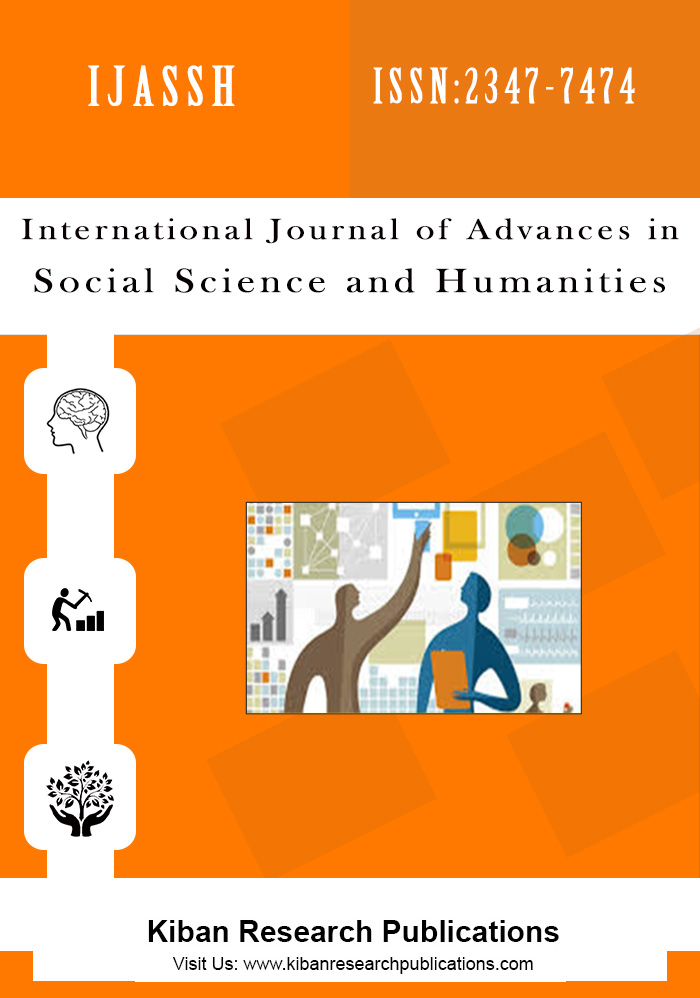What’s Expected of Men in Turkish Culture: Perceptions of Male University Students
Abstract
The aim of this study is to examine the opinion of male university students in Turkey about the expectations that are presented from society as men. For this purpose, firstly focus group interviews were conducted with 10 students and some questions were asked to identify how they are considering being men in Turkey. And then as an instrument of the study a questionnaire was designed by researchers, including socio-demographic characteristics and one open-ended question considering the answers given in these interviews. The study group was composed of 206 participants that were selected with the using convenience sampling and snowball sampling. The data gained from participants were analyzed use of content analyzes. In the analyzing process, data is arranged and coded by researchers and themed on the basis of codes and categories that have been identified in themes and then distributions are displayed by frequencies and percentages. Then data were interpreted. According to the results, three themes explain society’s expectations from men: fulfilling various responsibilities about life (282; %44, 69), fulfilling social responsibilities (245; %38, 83) and having essential personal qualities (104; %16, 48). The findings were discussed in the light of the literature and some suggestions were presented.
Keywords: Gender, masculinity, Male gender role.
References
Kimmel M (2008) Guy land: The perilous world where boys become men. NY: Harper Collins.
Dökmen ZY (2000) Toplumsalcinsiyet: Sosyalpsikolojikaçıklamalar. İstanbul: Remzi Publishing.
UNESCO (1997).Integrating girl child issues into population education. Retrieved April http://unesdoc.unesco.org/images/0011/001102/110280eo.pdf.
Harris A (2005) Gender as soft assembly. Hillsdale, NJ: The Analytic Press.
Yavuz Ş (2014) İktidarolmasürecindeerkeklerinerkeklikleimtihani, MilliFolklörDergisi, 26:104 110-127.
Basow SA (1992) Gender: Stereotypes and roles (3rd Ed.). Pacific Grove, CA: Brooks/Cole.
Basow SA (1984) Cultural variations in sex typing. Sex Roles, 10, 577–585.
Bank BJ (2007) Gender and education: An encyclopedia. USA: Praeger Publishers.
Douglas S (2000) Masculinity is dangerous. In L.K. Egendorf (Eds.) Male female roles, opposing viewpoints. (pp.124-128). California: Green haven Press, Inc.
Sunar D, FiÅŸek GO (2005) Contemporary Turkish family. In U. Gielen& J. Roopnarine(Eds.), Families in global perspective (pp. 169-183). Allyn & Bacon/Pearson.
Gürbüz E (1985) A measurement of sex-trait stereotypes. Unpublished master’s thesis, Boğaziçi University, Istanbul, Turkey.
Rhode DL (2000) Culture Establishes Gender Roles. In L.K. Egendorf (Eds), Male Female Roles, Opposing Viewpoints ( 21-25). California: Green haven Press, Inc.
Cornwall A (2000) Missing men? Reflections of men, masculinities and gender in GAD. IDS Bulletin, 31(2), 18-27.
Connell RW (1998) Gender and Power Society, the Person and Sexual Politics. Stanford University Press.
Pilcher J, Whelehan I (2004) Fifty Key Concepts in Gender Studies. London: Sage Publications.
Heppner PP, Wampold BE, Kivlighan DM Jr (2015) Research design in counseling: Research, statistics, & program evaluation. (4th Ed.). USA: Thomson Brooks/ Cole.
Yıldırım A Şimşek H (2006) Sosyalbilimlerdenitelaraştırmayöntemleri. Ankara: SeçkinYayınları.
Edwards T (2006) Cultures of Masculinity. London: Routledge.
Olavarria J (2006) Men’s Gender Relations, Identity, and Work-Family Balance in LatinAmerica. In I, Bannon & M, Correia(Eds), Men’s Issues in Development: The otherHalf of Gender (29-42). World Bank Publications.
Selek P (2011) Sürünesürüneerkekolmak, (5.Ed.), İstanbul: İletişim.
Şahin F, Beyazova U, Aktürk A (2003) Attitudes and practices regarding circumcision in Turkey. Child Care Health Development, 29(4): 275-280.
Sancar S (2009) Erkeklik: İmkansıziktidarailede, piyasada, sokaktaerkekler. İstanbul: Metis.
Taşıtman A (2012) Kutsalerkekliğininşasındabirdurak: Sünnetritüeli. In N. G.Toksoy (Eds.). Bellekizleri: Kurgudankuramagörüntüler (109-129).İstanbul: Kalkedon Yayınları.
Yavuz M, Demir T, Doğangün B (2012) Sünnetinçocukruhsağlığıüzerineetkisi: Gözdengeçirmeçalışması, TürkPsikiyatriDergisi, 23(1): 63-70.
Barutçu A (2015) “Ucundanazıcıkâ€laatılansaÄŸlamtemel: Türkiye’desünnetritüelive erkeklikiliÅŸkisi. A Journal of Identity and Culture, 3, 129-155.
Zeybekoğlu Ö (2010) Toplumsalcinsiyetbağlamındaerkeklikolgusu. Master’s thesis, Antalya University, Antalya, Turkey.
Women’s Commission for Refugee Women and Children (2005). Masculinities: Male roles and male involvement in the promotion of gender equality: A resource packet. D.Buscher (Eds.). New York: Women’s Commission for Refugee Women and Children. Retrieved http://www.unicef.org/emergencies/files/male_roles.pdf.
Mosse GL (1998) the Image of Man: The Creation of Modern Masculinity. Oxford University Press.
O’ Beaglaoich, C Morrison, TG Nielsen, E J Ryan TA (2015) Experiences of gender role conflict as described by Irish boys, Psychology of Men & Masculinities, 16(3): 312-325.
Kagitcibasi C (1997) Individualism and collectivism. In J. F. Berry,M. H. Segall, &C. Kagitcibasi (Eds.), Handbook of cross-cultural psychology 3, 1-49. London: Allyn & Bacon.
Bem SL (1974) the measurement of psychological androgyny. Journal of Consulting and Clinical Psychology, 42, 155-162.




